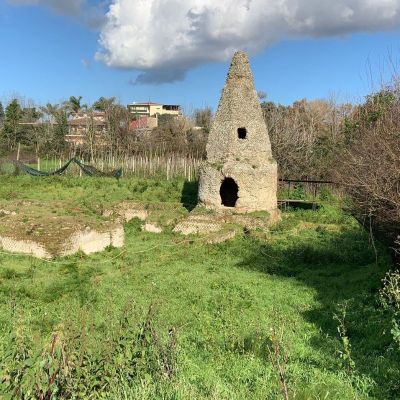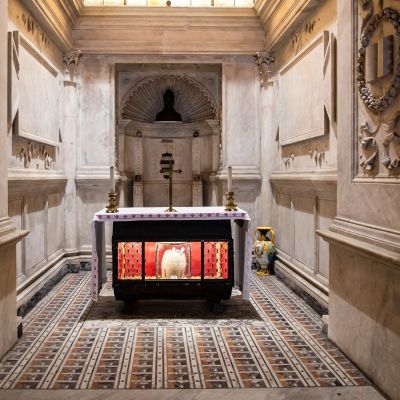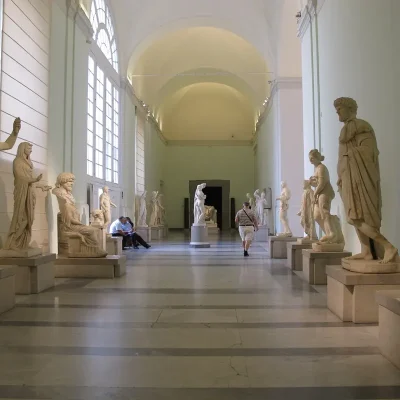Marina Grande, the charming seaside village in Sorrento, offers a picturesque escape into the authentic maritime life of the Amalfi Coast. This quaint fishing harbor, rich in tradition and myths, is a timeless retreat for travelers and tourists alike, blending historic charm with stunning Mediterranean views.
Historical Significance and Myths
Marina Grande’s roots stretch deep into Sorrento’s past, serving as a vital component of the city’s history. Despite urban developments, it retains the allure of a traditional fishing village with picturesque boats, quaint houses, and the lingering scent of the sea. This historic port has remained resilient, preserving its authentic charm and continuing its age-old fishing traditions with passion and seriousness.

The Allure of Marina Grande
The vibrant colors of fishing boats, the rustic beauty of the village, and the friendly ambiance create an inviting and warm atmosphere. Marina Grande is not just visually stunning; it’s a living, breathing part of Sorrento, where traditional practices coexist with modern tourism.
Culinary Delights
The restaurants in Marina Grande, bustling from spring to early October, offer some of the freshest seafood in Sorrento. Dining here means not only enjoying delectable local cuisine but also experiencing a piece of Sorrento’s maritime heritage.
Historical Landmarks
One of the notable historical landmarks in Marina Grande is the Ancient Gateway, a double-arched portal made from tuff and limestone, dating back to pre-Roman times. This gateway, an important testament to Greek construction techniques known as ‘isodoma,’ played a crucial role in the village’s history.
A Tragic Night in History
Marina Grande’s history is marked by a tragic event on the night of June 13, 1558, when an unexpected Saracen invasion brought devastation and despair. Despite being guarded, a betrayal by a servant led to the destruction of the entire city, a turning point in the history of the Sorrento Peninsula.
The Church of Sant’Anna
At the heart of Marina Grande is the Church of Sant’Anna, built by the fishermen of the village. It stands as a symbol of the community’s values and unity. The annual celebrations on July 26th in honor of Saint Anna, the patron saint of childbearing women, involve the entire Sorrento community and culminate in a splendid fireworks display, enchanting the entire coast.
The Legacy of Craftsmanship
Marina Grande is also known for its prestigious past in naval craftsmanship, particularly the creation of the “gozzo sorrentino,” a small rowing boat with a distinctive
pointed bow and stern, and a triangular sail. Today, the tradition continues in small family-run businesses, blending ancient methods with modern artisanal techniques.
Marina Grande and Cinema
The beauty of Marina Grande captivated famed director Dino Risi, who chose it as the setting for iconic scenes in the 1955 film “Pane, Amore e…”. Starring Sophia Loren and Vittorio de Sica, the film showcased Marina Grande’s charm and contributed to its popularity as a sought-after location for bathing and dining. The village’s connection to the film is celebrated with plaques indicating significant filming locations.
Activities and Cultural Events
Marina Grande is a hub for activities, offering boat trips, a quaint beach for sunbathing and swimming, and a venue for cultural events. These events reflect the village’s maritime traditions, providing tourists with an opportunity to engage with local culture.
A Photographer’s and Artist’s Haven
The picturesque setting of Marina Grande, with its natural beauty and colorful landscape, offers endless inspiration for artists and photographers. Capturing its essence is a way for visitors to take a piece of Sorrento’s beauty back home.
Accessibility and Practical Information
Marina Grande is easily reachable on foot from Sorrento via the ancient road of Marina Grande. Entrance to the village and the beach is free, with options to rent sunbeds and umbrellas at beach establishments. The area is accessible for those with reduced mobility, ensuring everyone can enjoy its beauty.
Conclusion
Marina Grande in Sorrento embodies the quintessence of the Italian seaside experience — serene, picturesque, and steeped in tradition. Whether seeking relaxation, culinary adventure, or a deep dive into local culture, Marina Grande promises an enchanting and delightful visit.
Discover More: “Discovering Sorrento: Things to Do in One Day“
To further explore the wonders of Sorrento, including Marina Grande and beyond, read “Discovering Sorrento: Things to Do in One Day.” This comprehensive guide offers a curated selection of activities and attractions, perfect for making the most of your day in this beautiful Italian town. From historical landmarks to scenic views, our guide ensures your visit to Sorrento is filled with unforgettable experiences. Dive into “Discovering Sorrento” to plan your perfect day in this enchanting destination.





